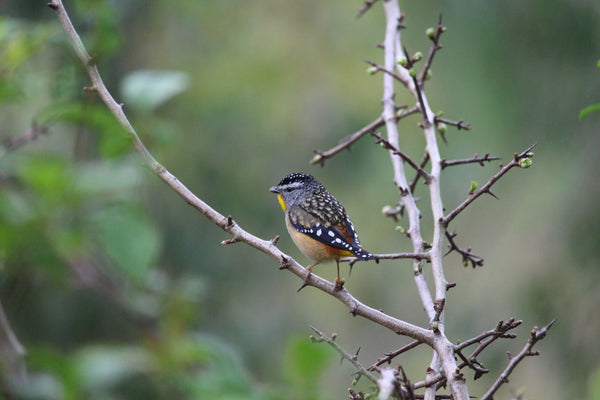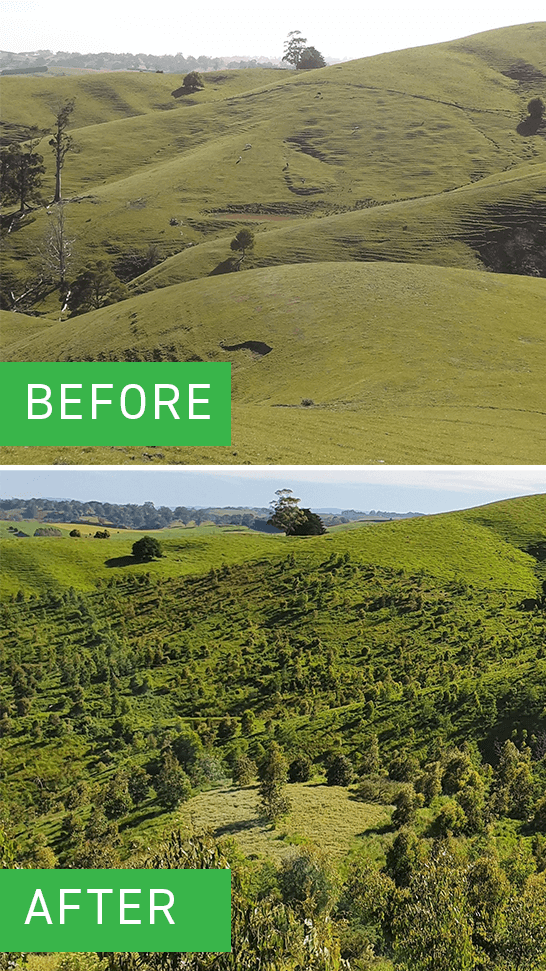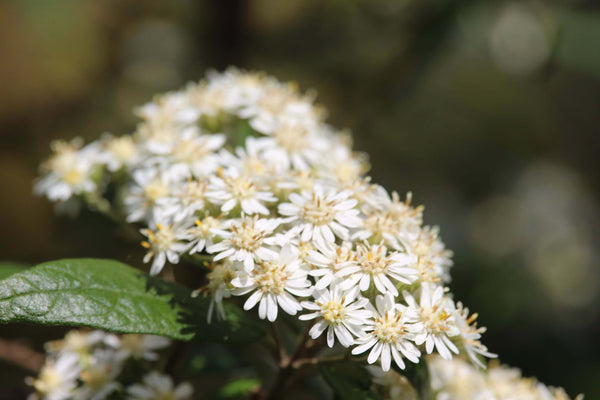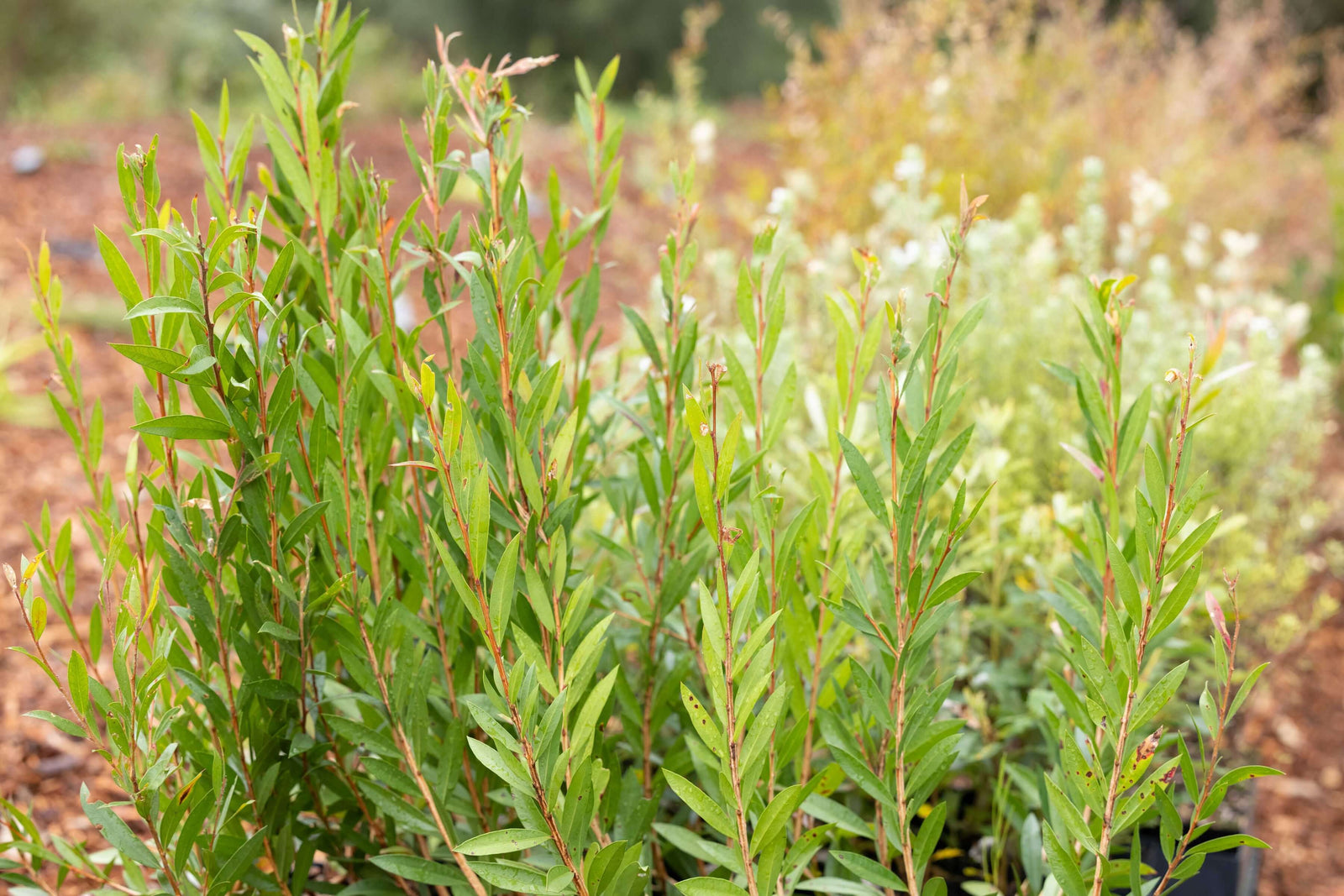There are many signs of a healthy and biodiverse ecosystem. The return of birds to an area that was once cleared of trees, is one of the first signs that a revegetation project is flourishing.
Greenfleet’s forest called Wurneet Laang Laang on Boonwurrung Country in Victoria is demonstrating this. Ecologist Dr Cara Sambell has been studying this forest for over seven years and found the number of native bird species visiting each year is growing.

About Wurneet Laang Laang
Located in South Gippsland on Boonwurrung Country, Wurneet Laang Laang was once cleared for farming. It now forms the first part of Greenfleet’s Strzelecki Nature Link .
The Strzelecki Nature Link is made up of four adjoining properties that, once fully restored, will form 3.5 kilometres of contiguous habitat for local birdlife, koalas, wallabies and other native animals. The Strzelecki Nature Link is also delivering climate action by removing carbon to protect our climate through the rest of this century.
Photo credit: Dr Cara Sambell

Studying Native Birds At Greenfleet’s Forest
Dr Sambell has studied the changes in bird populations at Wurneet Laang Laang as the property transforms over time from predominantly pasture dominated to new forest.
Dr Sambell has used survey stations through the forest to study the birds and observed forest bird life increasing over time.
There has been an increase of the average richness of forest bird species using different types of habitat on the gullies and slopes at Wurneet Laang Laang. This can likely be attributed to the continued growth and structural development of the young forest across the site and more forest birds being able to move into the property over time.
Since 2017, 35 different species have been recorded in the forest at Wurneet Laang Laang. In her most recent survey, she found that the number of native bird species observed rose to 23, up from 19 in the previous year.
Reflecting on her research, Dr Sambell said, “in Spring 2017, only 31% of the overall bird community there were forest bird species that depended on intact native forest for all daily activities. Now, in Spring 2023, 58% of the bird community is made up of forest bird species.”
As well as native birds, Greenfleet observed koalas utilising the trees planted just three years earlier. In regions like this, we are proud to see how quickly our work can make a positive change on the environment.
Observations like this demonstrate the importance of restoring native Australian forests in regions where vegetation is fragmented. Greenfleet’s forests are legally protected for up to 100 years, and Wurneet Laang Laang will continue delivering ecological benefits beyond the century.

Native Plants That Attract Bird Species
In all native revegetation projects, Greenfleet selects a diverse range of locally native plant species to attract birds and other native fauna.
When woodland and forest birds utilise a forest, it’s one of the first signs biodiversity is returning to an area we have restored. This is an important step in establishing resilient and self-sustaining ecosystems. Once birds begin to inhabit an area, they may distribute seeds from other areas, making an even more diverse forest than was originally restored.
Photo credit: Dr Cara Sambell
Native Bird Species Found At Wurneet Laang Laang
-
![]()
Spotted pardalote
Found across most of Australia, the spotted pardalote inhabitswoodlands and eucalypt forests. To breed it makes small nest burrows in soil banks. Greenfleet plants eucalyptus and restores woodlands, protecting them for up to 100 years to ensure the habitat of these bright and colourful birds.
-
![]()
Superb fairy-wren
Superb fairy-wrens are known for their trilling song and the rich blue and black plumage of the males during mating season. They inhabit the south-east of Australia and feed mostly on small insects found in low shrubs and ground cover. Planting low dense shrubs in our woodland forests also provides them suitable breeding habitats.
-
![]()
Grey shrike-thrush
Feeding on insects, spiders, frogs, lizards and birds' eggs, the Grey shrike-thrush is a familiar bird found across Australia. This bird breeds in nests made of bark strips, plant fibers and grasses. It prefers forests and woodlands where it can hunt for food in fallen logs and tree trunks. Our forests include plant species to support these and other nesting birds.
-
![]()
Grey currawong
The grey currawong lives in Southern Australia including the coast and the semi-desert, forests and woodlands and nest in tall trees. By protecting our forests for up to 100 years, trees have chance to grow to become homes for local Currawongs. They forage for small animals as well as eggs, insects, seeds and fruits, requiring a biodiverse habitat.
-
![]()
Nankeen kestrel
This kestrel is one of Australia’s smallest falcons. They prefer temperate grasslands and open woodland habitats. Nankeen kestrels nest in tree hollows, caves and occasionally on the ground. Known for hovering motionless over prey, they feed on mostly on insects as well as small animals. Planting trees which attract their prey is key to their diet.
-
![]()
Crimson rosellas
Bright blue and red crimson rosellas can be seen breeding in the tall eucalypts at Wurneet Laang Laang. The increasing habitat such as foliage, branches and bark are enabling rosellas and other birds to find shelter and nesting material and also forage to raise their families. They prefer the seeds of eucalypts, grasses and shrubs, as well as insects and some tree blossoms.
For a full list of birds observed at Wurneet Laang Laang in Spring 2023, refer to the end of this article.
Research like that of Dr Sambell helps Greenfleet understand the impact we are making in delivering biodiversity outcomes. The return of native birdlife to Wurneet Laang Laang demonstrates the importance of restoring and protecting native forests which improves habitat corridors for biodiversity conservation.
As we continue restore native, Australian forests, we will celebrate the return of biodiversity as they grow for generations to come.
Bird species observed in Spring 2023 at Greenfleet Property Wurneet Laang Laang
− Australian king parrot (Alisterus scapularis)
− Australian magpie (Cracticus tibicen)
− Australian raven (Corvus coronoides)
− Australian wood duck (Chenonetta jubata)
− Black-faced cuckoo shrike (Coracina novaehollandiae)
− Brown falcon (Falco berigora)
− Brown thornbill (Acanthiza pusilla)
− Common blackbird (Turdus merula)
− Common starling (Sturnus vulgaris)
− Crimson rosella (Platycercus elegans)
− Eastern yellow robin (Eopsaltria australis)
− Eurasian skylark (Alauda arvensis)
− Fan-tailed cuckoo (Cacomantis flabelliformis)
− Gang gang cockatoo (Callocephalon fimbriatum)
− Golden whistler (Pachycephala pectoralis)
− Grey butcherbird (Cracticus torquatus)
− Grey currawong (Strepera versicolor)
− Grey fantail (Rhipidura albiscapa)
− Grey shrike-thrush (Colluricincla harmonica)
− House sparrow (Passer domesticus)
− Laughing kookaburra (Dacelo novaeguineae)
− Little pied cormorant (Microcarbo melanoleucos)
− Masked lapwing (Vanellus miles)
− Nankeen kestrel (Falco cenchroides)
− Red wattlebird (Anthochaera carunculata)
− Silvereye (Zosterops lateralis)
− Spotted pardalote (Pardalotus punctatus)
− Striated thornbill (Acanthiza lineata)
− Superb fairy wren (Malurus cyaneus)
− Wedge-tailed Eagle (Aquila audax)
− White-browed scrubwren (Sericornis frontalis)
− White-faced heron (Egretta novaehollandiae)
− Yellow-faced honeyeater (Caligavis chrysops)








